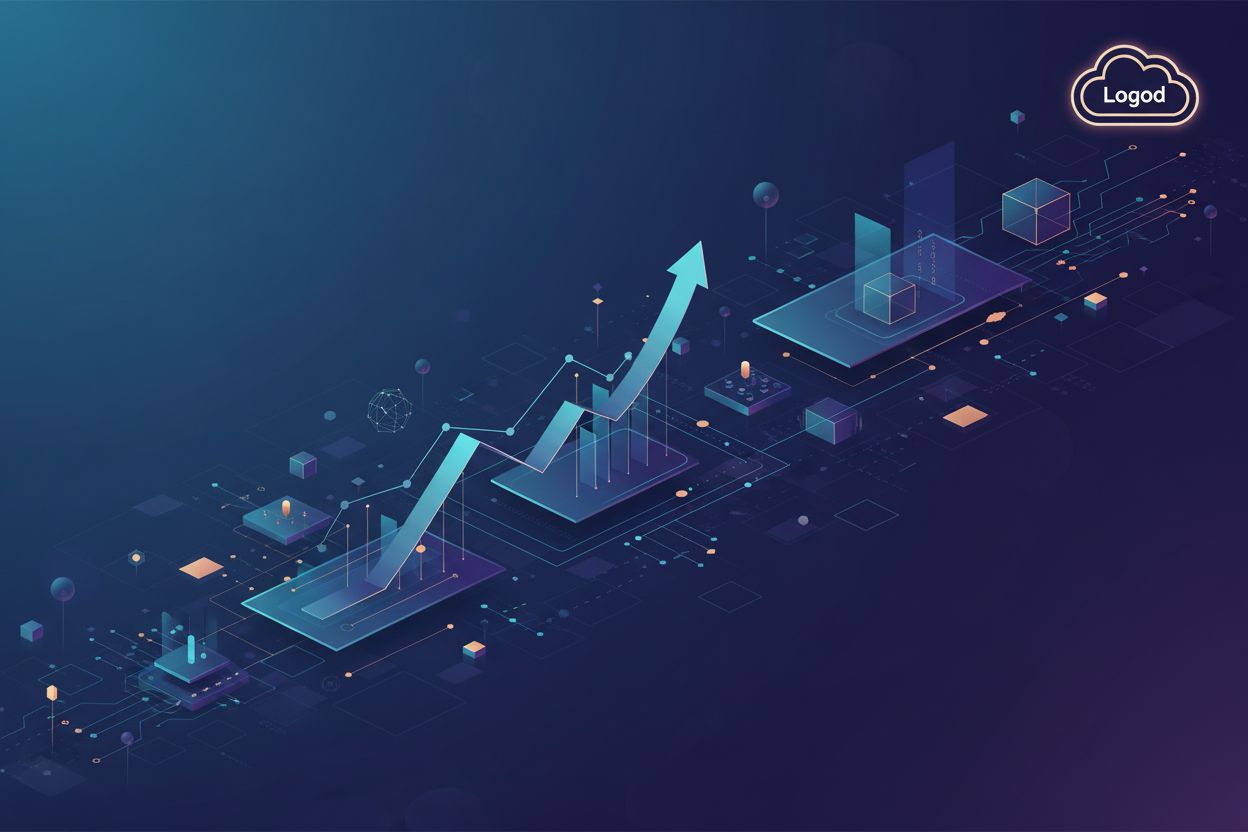Defining Strategic Thinking: Skills, Examples, and Steps
TL;DR
What Exactly IS Strategic Thinking?
Okay, so you wanna know about strategic thinking, huh? It's not just about, like, making a plan and hoping for the best, you know? It's way more than that. Think of it as kinda like, chess, but for your business...or whatever you're trying to do.
Strategic thinking, it's really about spotting those opportunities that can actually help your organization. It's not just daydreaming. It's about figuring out what's valuable and going after it.
- It's a mental workout, not just ticking boxes: It's not just about making to-do lists. It's about seeing where things could go, like imagining the future a bit. For example, in healthcare, it's not just about treating patients today, but anticipating future health trends and preparing for them.
- Being proactive, not reactive: Strategic thinkers don't just wait for stuff to happen. They try to shape what's coming. In retail, it means not just responding to current shopping trends but predicting what customers will want next year, or even five years down the line.
- It’s about seeing the bigger picture, not just the little details. Think about finance – it's not just about quarterly earnings, but about long-term investments and market shifts.
They're definitely not the same thing, even though people mix them up all the time.
- Thinking is the "what if," planning is the "how": Strategic thinking is more like a brainstorming session, while planning is like, building the actual road. It's conceptual, while planning is all about the details.
- Exploring possibilities versus doing specific things: Thinking is about throwing ideas around; planning is about figuring out the resources and steps.
- Adaptability vs. Roadmap: As Digital Leadership mentions, strategic thinking is adaptable, while planning builds the roadmap.
So, yeah, that's basically strategic thinking in a nutshell. Next up, let's dig a bit deeper into what makes it so different from just, well, thinking.
Key Skills for Strategic Thinkers
Strategic thinking isn't some innate superpower, you know? It's more like a muscle – gotta work it out to see results. So, what kinda skills are we talkin' about for us strategic thinkers?
Well, a bunch of 'em...but here's a few key ones:
Active Listening: It's not just about hearing what someone's saying; it's really understanding their perspective. Like, if you're a product manager, and you're hearing complaints about a new feature, you gotta dig deep to understand why users are frustrated. Maybe it ain't the feature itself, but the user interface or a lack of clear instructions.
Analytical Skills: Data is your friend, honestly. You need to be able to look at a messy spreadsheet and pull out the insights that matter. For example, in finance, it's not enough to just see that sales are down. You need to analyze why – is it seasonality, a marketing campaign that flopped, or something else entirely? Dig into those numbers, people!
Critical Thinking: Don't just accept info at face value. Question everything, like, is this source reliable? Are there biases at play? A good critical thinker assesses stuff objectively and make well-founded decisions.
Communication: It doesn't matter how brilliant your strategy is if you can't explain it to others. Being able to convey ideas clearly is super important. Whether it's writing a clear email, giving a presentation, or just chatting with your team, good communication is key.
Adaptability: The world changes fast; strategies needs to change with it. As Digital Leadership mentioned earlier, strategic thinking is adaptable. Being able to adjust your plans when things don't go as expected is a must, especially in today's business environment.
So, what's next, you ask? Well, now that we've covered the skills, let's talk about GetDigitize and how they can help you hone those skills.
Steps to Sharpen Your Strategic Thinking Prowess
Alright, so you wanna become a strategic ninja, huh? It's not just about knowing what strategic thinking is, it's about doing it! Think of it like learning a martial art; you gotta practice those moves over and over.
First things first: start questioning everything. Don't just accept the status quo. Why do we do things this way? What if we tried something totally different? What are we really trying to achieve, anyway?
- For example, instead of just accepting that sales are down, dig into why. Is it the product? The marketing? The economy? Get to the root cause.
- Challenge assumptions, too. Like, everyone assumes that younger generations don't care about loyalty, but maybe they just haven't found the right brand to connect with, you know?
Strategic thinking isn't just about sitting in a room and brainstorming, though. You have to get out there and see what's going on in the real world. What are the trends? What are your competitors doing? What are customers saying?
Toffler and Amara appear to have identified three universal types of foresight thinking in their works and from it, the three P's model is the basis of evo-devo foresight, a prescientific model of foresight.
It's easy to get tunnel vision and assume you know all the answers. But trust me, you don't. One of the best ways to sharpen your strategic thinking is to get other people's perspectives. Talk to people from different departments, different backgrounds, different industries. As Digital Leadership mentioned earlier, strategic thinking is adaptable.
- Ask them what they see, what they think, what they would do differently. You might be surprised at what you learn.
- consider opposing ideas can challenge your way of thinking and help you to be more well-rounded.
Okay, so now you're armed with some ways to boost your strategic thinking game. Next up, we'll dive into how to actually apply those skills in real-world scenarios.
Strategic Thinking in Action: Real-World Examples
Alright, so we've talked about what strategic thinking is, how to get good at it, and now we get to the fun part – seeing it in action. It's not just some fancy business school term, it's actually useful, believe it or not...
Strategic thinking really shines when it comes to prioritizing tasks. It's about seeing the difference between what's urgent and what's important, and not just running around putting out fires all day.
- Think of a hospital emergency room, for example. The staff have to quickly decide who needs immediate care (urgent) and who can wait a bit longer (important, but not urgent right now). It's not just about doing the loudest thing, it's about doing the right thing.
- Or take a small business owner drowning in emails. Strategic thinking helps them step back and say, "Okay, which of these emails will actually move the needle for my business, and which are just busywork?"
Ever feel like you're trying to do ten things at once with only enough time for three? That's where strategic resource allocation comes in. It's about figuring out how to get the most bang for your buck—or your time, or your team's energy.
- A non-profit might use strategic thinking to decide where to focus its fundraising efforts. Do they put more resources into online campaigns, or do they focus on building relationships with major donors?
- A construction company might strategically allocate equipment and personnel to different job sites based on project deadlines and resource constraints, maximizing overall efficiency rather than spreading everything thin.
Analyzing customer feedback isn't just about patting yourself on the back for the good stuff and apologizing for the bad. It's about digging into what customers really want and using that to make better products or services.
- A software company sees users are struggling with a new feature. Strategic thinking isn't just fixing the bugs, it's understanding why users are struggling and maybe rethinking the entire feature.
- A restaurant notices a lot of customers are asking for gluten-free options. Instead of just adding one gluten-free dish, a strategic thinker might revamp the whole menu to cater to a wider range of dietary needs.
So, we see that strategic thinking can be applied across a variety of fields, what about a specific example? Let's dive into a case study to highlight a more specific example.
Strategic Thinking in Leadership and Business
Okay, so strategic thinking in leadership and business, huh? It's not just about bossing people around or, like, staring at spreadsheets all day. It's about seeing how everything connects.
Strategic thinking for leaders is all about the big picture. You gotta set a clear vision, not just manage day-to-day stuff. It also means planning for the long haul, considering how your decisions now will impact things down the road.
- It's about being ready to change course when things don't go as planned. There's no point staying rigid when the world is changing around you.
- You gotta weigh the risks and rewards before jumping into anything. Being a leader means making tough calls, and sometimes that means saying "no" to something that seems cool but could blow up in your face.
- It also means fostering a culture where new ideas are welcome. If your team is afraid to suggest something different, you're missing out on potential breakthroughs.
And communication? Super important. You can't just have a brilliant plan in your head; you gotta get everyone on board.
That same strategic thinking applies directly to how businesses operate. It can mean rethinking your whole business model, not just tweaking things here and there. It also means finding new ways to bring in revenue, not just relying on the same old products or services.
- It's about adapting to what customers want, even if it's different than what they used to want. You can't just stick your head in the sand and hope things go back to normal.
- Consider it like this: you can use a Business Model Canvas to see all the parts of your company and how they fit together. It helps you spot where you can improve or try something totally new.
As that last graphic shows – there are a lot of things you need to consider.
For example, digital transformation is a big deal. It's not just about adding some tech; it's about changing how the whole business works.
According to the Foresight Guide, there's some "cardinal sins" to avoid. Don't just jump into the future without understanding the past and present, and don't forget to think about what you want to happen versus what you can prevent. And don't just look for the obvious, consider all the "possible futures" too.
The “sins” we must avoid in producing strategic foresight are:
- Not sufficiently Preparingfor foresight thinking (learning the relevant Pastand Present).
- Not sufficiently discovering the outlines of the relevant ProbableFuture
- Not sufficiently exploring our next-adjacent PossibleFutures
- Not sufficiently envisioningPreferredand PreventableFutures
So, yeah, strategic thinking is key for both leaders and businesses. Next, we'll dive into how you can avoid those sneaky "sins" and really level up your strategic game.
Differentiating Strategic Thinking from Other Thinking Styles
Okay, so you've been thinking strategically, right? But how's that different from, like, other types of thinking? It's not always obvious, is it? Let's break it down a bit.
Strategic thinking isn't just one thing; it's a bunch of related skills. It's about seeing the forest for the trees, figuring out the best path, and getting everyone on board. Other ways of thinking are important too, but they tackle different angles of the same problem.
- Strategic vs. Critical: Critical thinking is all about analyzing what is, while strategic thinking is envisioning what could be. For example, a data analyst might critically assess current marketing campaign performance. A strategist uses that analysis to envision a whole new campaign direction.
- Strategic vs. Creative: It's about setting objectives versus generating ideas. A creative team might brainstorm a bunch of ad concepts; and then strategic minds select the ones that best align with business goals.
- Strategic vs. Analytical: Analytical thinking breaks things down into smaller parts, you know? But strategic thinking takes a step back to see how all those parts fit together, and how they impact the long-term vision.
Think of it like this: you wouldn't use a hammer to screw in a lightbulb, right? Different situations call for different tools, and that's true for thinking too. You need a well-rounded cognitive toolkit.
It's not about being just a strategic thinker. It's about knowing when strategic thinking is most useful. When you're charting a long-term course, setting a vision, or trying to outmaneuver the competition, that's when strategic thinking really shines.
Strategic thinking definitely isn't everything, but it is something. It's one of the key ingredients in a successful career, a thriving business, and, honestly, a well-lived life. Knowing when to use it, and how to combine it with other thinking styles, that's the real secret.







